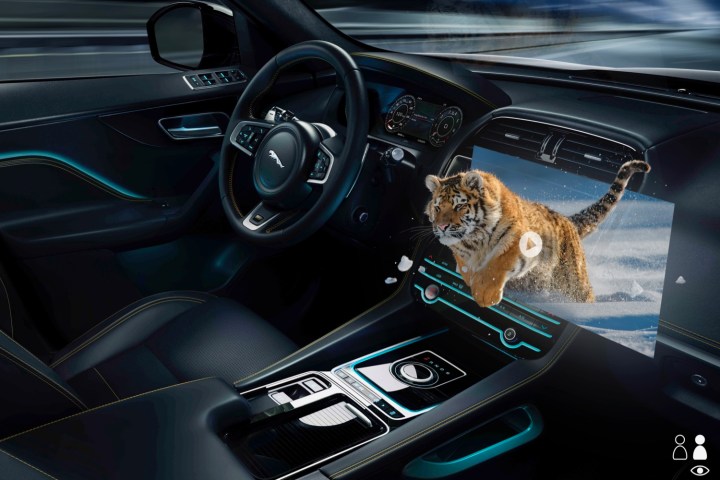
Head-up displays have become a common feature in cars, usually showing basic information like speed or navigation directions. But Jaguar Land Rover (JLR) sees more potential in the technology. The British automaker is developing an elaborate 3D head-up display that can show drivers important safety information, or let passengers watch a movie. It’s unclear if the display will go into production, though.
An elaborate in-car display might sound distracting, but JLR claims it could actually improve safety. The 3D head-up display could be used to show hazards up ahead, and help counteract the effects of poor visibility, according to the automaker. Navigation directions and other messages could also be projected onto the road ahead, according to JLR, placing them where the driver should already be looking. Studies conducted in Germany have shown that stereoscopic 3D displays can help improve driver reaction times, JLR claims.
While drivers get safety warnings, passengers get to have fun. The technology could also be used to let passengers watch 3D movies, according to JLR. Head- and eye-tracking tech would allow viewers to see 3D images without the need for individual screens or 3D glasses, the automaker claims. This would become a bigger deal in self-driving cars, where everyone would be a passenger. Displays could be set up to allow individual passengers to view their own media simultaneously, according to JLR.
The 3D head-up display is one of several research projects being conducted by JLR on in-car tech. Researchers have also experimented with tech that can sense people’s moods, and even tried to use a heated steering wheel to convey navigation directions. JLR is certainly thinking outside the box, but it’s unclear if any of these ideas will make it into future production cars.
JLR said the 3D display was part of its “Smart Cabin” program, which aims to use technology to improve safety and convenience, as well as to anticipate how in-car tech will change in a world of autonomous driving. But the automaker wouldn’t discuss production prospects. Bosch claims to have a production-ready 3D display for instrument clusters, and Nissan has discussed projecting digital imagery onto the road to give drivers more information.


